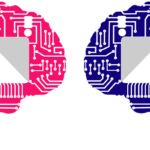Intelligent Process Automation (IPA) is part of a new generation of technologies that help businesses cut costs, increase productivity, and improve employee and customer satisfaction. Intelligent Process Automation (IPA) is the next iteration of Robotic Process Automation (RPA), which continues to drive digital transformations forward. It was born out of rule-based task automation.
What does Intelligent Process Automation imply?
Process that is intuitive Automation is just one facet of a larger technological shift known as automation. By creating and leveraging new forms of intelligence, automation is assisting in the creation and deployment of seemingly space-age technologies, ranging from driverless cars to autonomous drones. Automation is changing the way we live and work, whether it’s through customer communications via desktop assistants or through automated tasks across an organisation.
Automation, according to Forrester, will “become the point of the digital transformation spear” this year, affecting everything from infrastructure to customers and business models. Organizations must orchestrate their complex operations via automated processes in order to deliver services based on this automation.
What are the technologies that make Intelligent Process Automation possible?
Intelligent Process Automation, at its most basic level, is made up of two primary market technologies: RPA and AI.
However, there are specific Artificial Intelligence technologies that serve diverse objectives but are crucial components of IPA that enable cognitive skills to automate increasingly complicated business operations at a more granular level.
Here’s how each technology works together to form Intelligent Process Automation:
- The automation of repetitive, rules-based business operations is known as robotic process automation (RPA).
- Artificial Intelligence (AI) is a set of technologies that allows computers to do activities that require logic, judgement, and decision-making. Simply explained, AI refers to a computer’s ability to gather and extract data and apply reasoning to that data in order to make a judgement.

- Machine Learning is an AI technique that consists of systems that use data to enhance their performance without receiving explicit instructions. Finding patterns in data and then using those patterns to make accurate predictions is a nice example.
- Natural Language Processing (NLP) is an artificial intelligence (AI) technology that translates language and uses that data to make choices and execute actions. Chatbots and virtual home assistants like Amazon’s Echo and Google Home are two instances of NLP in action.
- Computer Vision is a type of artificial intelligence that allows computers to read and interpret images. In banking, computer vision is being used to detect fake banknotes in order to improve security.
What is Intelligent Process Automation’s main goal?
Intelligent Process Automation (IPA) is a set of tools for managing, automating, and integrating digital processes. The three main technologies that make up IPA are Digital Process Automation (DPA), Robotic Process Automation (RPA), and Artificial Intelligence (AI).
DPA refers to a flexible group of intelligent process automation solutions that have grown from BPM technology. DPA delivers the flexibility and knowledge required for a holistic approach to business process automation. It makes it easier to identify areas for improvement and make agile changes by allowing you to manage the flow of data across your organisation.
RPA, on the other hand, adds speed and efficiency to the equation. Robots that mimic human movements, such as re-keying data from one system to another, can help to minimise particularly manual, labor-intensive jobs.
The AI then adds a great deal of intelligence and decision-making to the mix. This adds a new level of thought to automation because AI can analyse data in ways that humans can’t, recognising patterns in data and learning from previous decisions to make increasingly intelligent decisions.
While each of these technologies is powerful in its own right, deploying them all at once is insufficient. You can ensure that you’re taking a strategic approach and automating not just tasks, but entire processes, by combining labour-saving solutions like RPA and AI with DPA.
How does Intelligent Automation vary from IT Automation?
Despite the fact that Artificial Intelligence and automation are not new concepts in the technology landscape, advances in digital technologies, the availability of sensors, and improved processing power and storage have resulted in an expansion of their reach in the global corporate world. Let’s have a look at the differences between automation and Intelligent Automation.
Automation appears to be the handing over of human tasks to machines. Automation, on the other hand, is fundamentally altering the way operations/tasks are carried out in business contexts. Fixed automation, programmable automation, robotic process automation, robotics, and so on are all examples of automation.
Intelligent Automation varies from traditional IT automation in that it includes a layer of Machine Learning and Artificial Intelligence capabilities. For example, if a consumer forgets to update a section or enters incorrect data while filling out an e-form for a bank account opening, the IT system will reject the form and flag it for human intervention to correct the problem. Intelligent automation, on the other hand, will recognise the problem and self-correct it without the need for human participation. This self-learning and intelligence application improves corporate productivity in terms of time and effort, as well as the overall customer experience.
Intelligent Process Automation Provides a Wide Range of Benefits
According to McKinsey, “several organisations across industries have been experimenting with IPA, with significant results: automation of 50–70% of tasks, translating to 20–35% annual run-rate cost reductions.” The following methods are employed to accomplish this:
Reduction in straight-through processing time of 50-60% Return on investment in the triple digits
The biggest benefit of Intelligent Process Automation, it’s safe to assume, is a large increase in the returns RPA provides.
The inevitable conclusion of coupling RPA task automation with AI technologies like machine learning, natural language processing, and computer vision to automate more complex, end-to-end business processes is:
- More cost savings than RPA alone can provide
- Process output quality has improved.
- Enhanced efficiency
- allowing employees to devote even more time to strategic, mission-critical initiatives
- Humans and robots orchestration – Intelligent Process Automation can help to coordinate work amongst robots, people, and systems, rather than merely placing technologies like RPA in silos and leaving them to do separate jobs. Robotics are great, but unless they’re combined with an IPA platform, you’ll end up with isolated solutions rather than enterprise-wide ones.
- Freeing up employees from routine tasks – Employees can be freed from mundane activities thanks to RPA, which allows them to focus on more productive tasks. You can be confident that the right decision is being taken because it is planned out in the workflow, with AI assisting in making educated judgments along the way.
- Ensure good governance and reduce risk – You can lessen the risk of mistakes like improper data entry by automating end-to-end processes. RPA takes care of automating jobs, but IPA ensures that your processes are done consistently.
- Visibility of procedures and the customer journey from beginning to end – It might be difficult to see the enterprise-wide impact of specific automation technologies when they are introduced. You can observe the complete process using IPA, allowing you to spot bottlenecks or areas where the customer journey could be improved.
- Agility and speed of process change – IPA not only allows you to speed up end-to-end processing, but it also allows you to make quick changes to processes and the technologies that support them. This enables businesses to enhance their business processes on a continuous basis.
What Are Some Intelligent Process Automation Use Cases?
Intelligent Process Automation, like RPA, can be used in a variety of sectors, departments, and roles. In addition, similar to RPA’s early days, there are some industries that are early adopters with frequent use cases that are already utilising Intelligent Process Automation:
Financial Services IPA is already being used to construct more precise credit models to reinforce lending processes, enhance trade execution and routing, and use analytics to understand client pricing sensitivity and preferences in the Financial Services industry.
Another outstanding example is BBVA (Banco Bilbao Vizcaya Argentaria), which uses computer vision to speed up and improve new customer onboarding. Prospects can open bank accounts by simply taking a photo with this technology.
Insurance
Insurance businesses are aggressively using Natural Language Processing-based chatbots to automate and improve customer experiences. They’re employed in an IPA framework to automate appointment scheduling and develop a self-service approach that allows users to quickly choose an insurance policy.
Healthcare
Intelligent Process Automation has the advantage of seeing data in real time and delivering it to customers without the need for manual involvement.
According to an article in Information Age, pharmaceutical companies and medical device manufacturers are embracing the IPA’s improved data accessibility to strengthen compliance by reducing fraud and errors while improving security, safety, and accuracy.
The healthcare business is also benefiting from the digitalization and automation of document handling and regulatory monitoring to improve drug research and vaccine development.
How Will Intelligent Process Automation Play a Role in the Future of Automation?
Intelligent Process Automation is the way of the future in terms of automation. Robotic Process Automation has emerged from the hype cycle and is being widely used, despite the fact that it is not yet saturated.
Despite the fact that businesses have suffered with low ROI from costly RPA maintenance and support, as well as a shaky digital workforce due to poor automation design approaches, RPA growing pains will soon be overcome to usher in IPA.
While combining AI and RPA to give Intelligent Process Automation isn’t quite ready for prime time yet, there’s plenty of room for experimentation, and early adopters are already seeing positive results, so it’s only a matter of time until it becomes a hot topic.
What distinguishes IPA from traditional process automation?
Intelligent Automation differs from traditional IT automation in many ways thanks to its Machine Learning and Artificial Intelligence capabilities.
For example, if a consumer does not update a section or enters incorrect data while filling out an e-form for creating a bank account, the IT system may reject the form and flag it for a person to correct the problem. In the case of Intelligent Automation, however, the system will detect the problem and rectify it without the need for human participation.
Businesses benefit from this self-learning and intelligence application since it saves time and effort while also improving the overall consumer experience.
Conclusion
In short, intelligent automation was born as a concept associated with digital transformation, but with the advantage of being more defined and proposing a practical solution by merging four branches of technology: BPM, RPA, AI, and integration.
A company with a backbone orchestrated by workflows (using BPM) involving users, systems, data, and documents; RPA in specific moments and tasks (to address bottlenecks in previously manual tasks); and hybrid decision-making between managers and automations based on Artificial Intelligence would be an ideal case.
Finally, we can complete the picture by integrating all of our company’s systems (at the API level when possible, and via RPA when not) and centralising the data generated by the processes in a central database. To ensure better recorded decisions, the data will be examined and fed into the AI machine learning system.
The main goals of Intelligent Automation are the same as they have always been (and are also the most difficult to achieve): to improve the end-to-end customer experience and employee productivity by eliminating repetitive tasks and allowing employees to focus on tasks that add value to the company (creative improvements, new strategies and solutions, decision making, and so on), as well as to save time and money.



